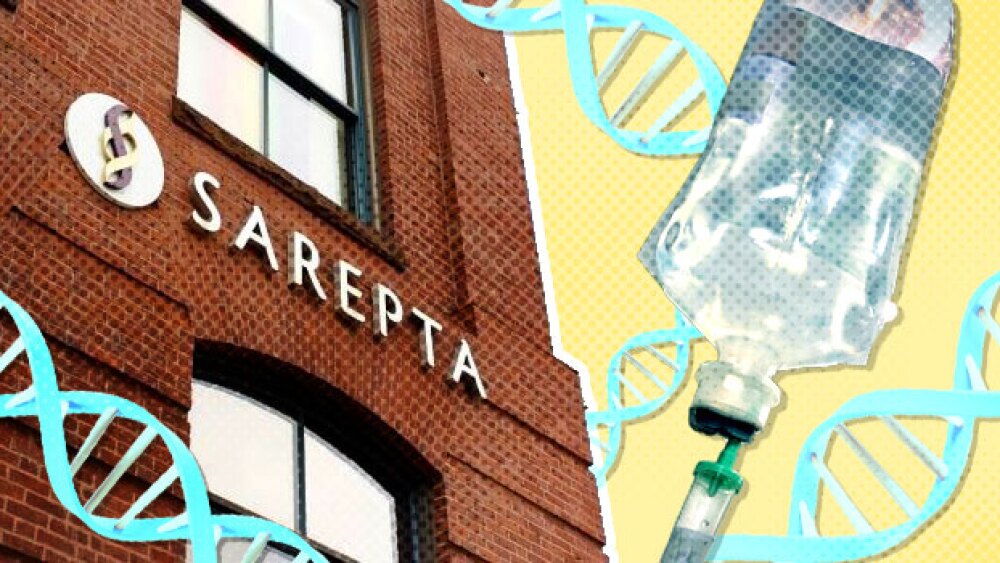• First-In-Man study, a major milestone for the Company, demonstrated highly successful performance of the LuxCath system to optically assess tissue contact before and during ablation
• Company’s innovation has immediate market applications in the catheter treatment of all arrhythmias treated with cardiac ablation, including Atrial Fibrillation (AF), the most common irregular heartbeat affliction
• Optical technology directly interrogates cardiac tissue prior to and during ablation (without pressure sensors or ultrasound) using light and can be embedded into standard ablation catheters
• System determines electrode-tissue contact as well as monitors lesion progression below heart surface during ablation in real-time
Boston (December 16, 2015) -- LuxCath LLC, a leading medical technology company developing visualization and optical tissue interrogation for cardiac ablation, announced today that the Company’s technology was used for the first time in procedures to treat arrhythmia patients, with highly promising results. The ablation procedures were performed in eleven arrhythmia patients including atrial fibrillation patients in Prague at Homolka Hospital, led by electrophysiologist Vivek Reddy, MD, Director of Arrhythmia Services at The Mount Sinai Hospital and the Mount Sinai Health System, and Petr Neuzil, MD, Director of Cardiology, Homolka Hospital.
LuxCath’s catheter-based technology can assess tissue contact, visualize lesions, and detect lesion gaps in real-time. LuxCath’s technology has market applications in all arrhythmia ablation procedures and is being optimized for the treatment of Atrial Fibrillation (AF). AF is the most common cardiac arrhythmia in the U.S., affecting more than 2 million people and is estimated to affect about 1 in every 150 individuals. Worldwide estimates of AF prevalence far exceed 10 million patients. AF has been implicated as a significant cause of strokes, thromboembolic events, and heart failure, costing the U.S. healthcare system billions of dollars annually. The minimally invasive procedure used to restore the heartbeat to a normal pace, known as Catheter Ablation (CA), is now commonly employed to treat arrhythmia patients. Treatment outcomes could be improved by a real-time, lesion-identifying, direct visualization tool offered by LuxCath’s system. It would help the procedure to be performed consistently, effectively, quickly and safely as it can also be used to assess tissue contact.
The LuxCath optical tissue interrogation technology was used in eleven patients suffering from arrhythmias such as Atrial Flutter, AVNRT (AV Nodal Re-entrant Tachycardia), and Atrial Fibrillation. The cases demonstrated the utility of the optical tissue interrogation during ablation to reliably assess tissue contact as well as to monitor lesion formation. LuxCath’s optical technology can be incorporated into standard ablation catheters at very low costs with excellent yields and represents a transformational change to the feedback physicians receive during an ablation procedure. Currently, no other technology embedded into an ablation catheter provides data or information about the tissue under the surface of the heart being ablated in real time. Other sensors such as temperature or pressure provide an indication of what is happening at the electrode or the electrode-tissue interface while LuxCath’s technology “sees” underneath the surface of the heart into the tissue and provides information that is not currently available. This system aims to provide better tissue contact and lesion formation assessment during ablation to reduce procedure times, fluoroscopy times, arrhythmia recurrences, and costs.
“In all eleven patients, the technology identified tissue contact and was easy to use. In a wide variety of settings, we were able to assess and monitor ablation lesions as they were being created. There were no complications,” said Vivek Reddy, MD. “This is an exciting step forward in the world of ablation. Based on our experience, the technology platform is quite promising.”
“We are thrilled with the performance of our optical tissue interrogation system for contact and lesion progression assessment,” said Dr. Omar Amirana, M.D., LuxCath Chief Executive Officer and Senior Vice President at its parent company, Boston-based Allied Minds. “Given the potential to positively impact all ablation procedures, we are excited to advance the technology into the marketplace. This is an enormous milestone for the company.”
More information about LuxCath can be found at www.luxcath.com. The company is a subsidiary of Allied Minds. (LSE: ALM).
About LuxCath, LLC
LuxCath is a leader in catheter-based, real-time, optical tissue-electrode contact assessment, lesion progression monitoring, and lesion visualization for cardiac ablation. LuxCath’s technology is applicable to all cardiac ablation and is focused on Atrial Fibrillation ablation as its initial target market. The company’s technology involves continuous optical tissue interrogation during ablation procedures and is protected with issued patents as well as a portfolio of intellectual property filings. LuxCath’s technology continuously assesses tissue contact during ablation. It monitors tissue ablation under the surface of the heart in real time to help ensure the elimination of gaps of viable tissue between the lesions during ablation procedures. LuxCath aims to increase the value of healthcare by improving clinical outcomes while reducing procedure times, fluoroscopy exposure, arrhythmia recurrences, and costs. LuxCath was formed in partnership with researchers and faculty at the George Washington University, as well as the product development team at Nocturnal Product Development. More information about LuxCath can be found on the web at www.luxcath.com, or by calling +1-617-419-1800.
About Allied Minds
Allied Minds is an innovative U.S. science and technology development and commercialization company. Operating since 2006, Allied Minds forms, funds, manages and builds products and businesses based on innovative technologies developed at leading U.S. universities and federal research institutions. Allied Minds serves as a diversified holding company that supports its businesses and product development with capital, central management and shared services. More information about the Boston-based company can be found at www.alliedminds.com.
• Company’s innovation has immediate market applications in the catheter treatment of all arrhythmias treated with cardiac ablation, including Atrial Fibrillation (AF), the most common irregular heartbeat affliction
• Optical technology directly interrogates cardiac tissue prior to and during ablation (without pressure sensors or ultrasound) using light and can be embedded into standard ablation catheters
• System determines electrode-tissue contact as well as monitors lesion progression below heart surface during ablation in real-time
Boston (December 16, 2015) -- LuxCath LLC, a leading medical technology company developing visualization and optical tissue interrogation for cardiac ablation, announced today that the Company’s technology was used for the first time in procedures to treat arrhythmia patients, with highly promising results. The ablation procedures were performed in eleven arrhythmia patients including atrial fibrillation patients in Prague at Homolka Hospital, led by electrophysiologist Vivek Reddy, MD, Director of Arrhythmia Services at The Mount Sinai Hospital and the Mount Sinai Health System, and Petr Neuzil, MD, Director of Cardiology, Homolka Hospital.
LuxCath’s catheter-based technology can assess tissue contact, visualize lesions, and detect lesion gaps in real-time. LuxCath’s technology has market applications in all arrhythmia ablation procedures and is being optimized for the treatment of Atrial Fibrillation (AF). AF is the most common cardiac arrhythmia in the U.S., affecting more than 2 million people and is estimated to affect about 1 in every 150 individuals. Worldwide estimates of AF prevalence far exceed 10 million patients. AF has been implicated as a significant cause of strokes, thromboembolic events, and heart failure, costing the U.S. healthcare system billions of dollars annually. The minimally invasive procedure used to restore the heartbeat to a normal pace, known as Catheter Ablation (CA), is now commonly employed to treat arrhythmia patients. Treatment outcomes could be improved by a real-time, lesion-identifying, direct visualization tool offered by LuxCath’s system. It would help the procedure to be performed consistently, effectively, quickly and safely as it can also be used to assess tissue contact.
The LuxCath optical tissue interrogation technology was used in eleven patients suffering from arrhythmias such as Atrial Flutter, AVNRT (AV Nodal Re-entrant Tachycardia), and Atrial Fibrillation. The cases demonstrated the utility of the optical tissue interrogation during ablation to reliably assess tissue contact as well as to monitor lesion formation. LuxCath’s optical technology can be incorporated into standard ablation catheters at very low costs with excellent yields and represents a transformational change to the feedback physicians receive during an ablation procedure. Currently, no other technology embedded into an ablation catheter provides data or information about the tissue under the surface of the heart being ablated in real time. Other sensors such as temperature or pressure provide an indication of what is happening at the electrode or the electrode-tissue interface while LuxCath’s technology “sees” underneath the surface of the heart into the tissue and provides information that is not currently available. This system aims to provide better tissue contact and lesion formation assessment during ablation to reduce procedure times, fluoroscopy times, arrhythmia recurrences, and costs.
“In all eleven patients, the technology identified tissue contact and was easy to use. In a wide variety of settings, we were able to assess and monitor ablation lesions as they were being created. There were no complications,” said Vivek Reddy, MD. “This is an exciting step forward in the world of ablation. Based on our experience, the technology platform is quite promising.”
“We are thrilled with the performance of our optical tissue interrogation system for contact and lesion progression assessment,” said Dr. Omar Amirana, M.D., LuxCath Chief Executive Officer and Senior Vice President at its parent company, Boston-based Allied Minds. “Given the potential to positively impact all ablation procedures, we are excited to advance the technology into the marketplace. This is an enormous milestone for the company.”
More information about LuxCath can be found at www.luxcath.com. The company is a subsidiary of Allied Minds. (LSE: ALM).
About LuxCath, LLC
LuxCath is a leader in catheter-based, real-time, optical tissue-electrode contact assessment, lesion progression monitoring, and lesion visualization for cardiac ablation. LuxCath’s technology is applicable to all cardiac ablation and is focused on Atrial Fibrillation ablation as its initial target market. The company’s technology involves continuous optical tissue interrogation during ablation procedures and is protected with issued patents as well as a portfolio of intellectual property filings. LuxCath’s technology continuously assesses tissue contact during ablation. It monitors tissue ablation under the surface of the heart in real time to help ensure the elimination of gaps of viable tissue between the lesions during ablation procedures. LuxCath aims to increase the value of healthcare by improving clinical outcomes while reducing procedure times, fluoroscopy exposure, arrhythmia recurrences, and costs. LuxCath was formed in partnership with researchers and faculty at the George Washington University, as well as the product development team at Nocturnal Product Development. More information about LuxCath can be found on the web at www.luxcath.com, or by calling +1-617-419-1800.
About Allied Minds
Allied Minds is an innovative U.S. science and technology development and commercialization company. Operating since 2006, Allied Minds forms, funds, manages and builds products and businesses based on innovative technologies developed at leading U.S. universities and federal research institutions. Allied Minds serves as a diversified holding company that supports its businesses and product development with capital, central management and shared services. More information about the Boston-based company can be found at www.alliedminds.com.




